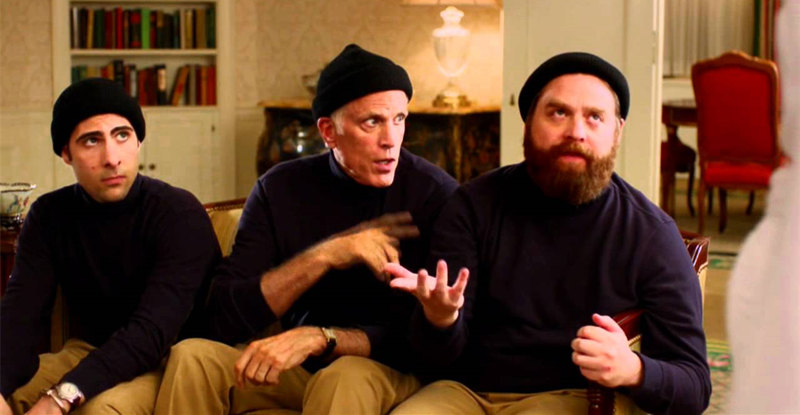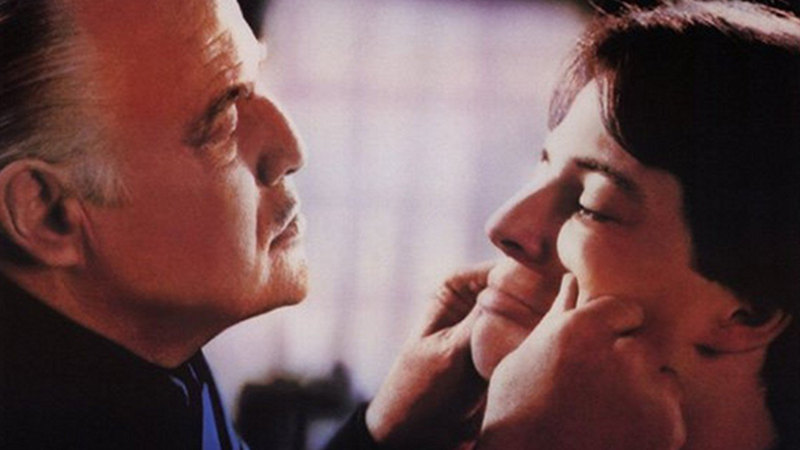Mention John Huston and a film buff is apt to start speaking rapturously about the director’s debut, “The Maltese Falcon” (1941)—or perhaps “The Treasure of the Sierra Madre,” “Key Largo,” “The Asphalt Jungle,” “The African Queen,” “The Misfits,” or his adaptation of Rudyard Kipling’s “The Man Who Would Be King.”
“Annie” (1982) would not come to mind. It surprised a lot of people that Huston decided to make a film adaptation of the Broadway musical, which itself was based on the Little Orphan Annie comic strip that was syndicated from 1924-2010.
Then, when it was released, surprise turned to anger. Critics didn’t just pan it. They pan fried it.
Maybe the severe (and unreasonable) reaction many of them had to Aileen Quinn (too “brassy,” too “buxom,” too “obnoxious”) as Annie—a reaction that would be repeated when George Lucas cast unknown Jake Lloyd as Anakin Skywalker in “The Phantom Menace”—kept them from enjoying the film. Perhaps they would have preferred Drew Barrymore, who auditioned but didn’t get the part.
Maybe it’s because the film is predictable (though in fairness, if anyone has seen the Broadway musical or read any of the comics, they pretty much know what’s going to happen).
But maybe—and I suspect this is the insect that crawled up all of their posteriors—they were expecting a tone that wasn’t so completely removed from everything else Huston had directed. If you go into this expecting even the slightest shred of cynicism or realism, “Annie” is going to seem Saccharine.
I mean, come on. You have a Republican biz-whiz who’s one of the world’s richest and most powerful men—named Warbucks, by the way, for how the profiteer made much of his money through the military industrial complex—and this hard-hearted money-comes-first guy is charmed by an orphan his assistant convinced him to take in for a week that media are doing a profile on him? And then, when he flies to Washington, D.C. with Annie to meet the President, FDR unveils his Civilian Conservation Corps idea and asks Warbucks and Annie to get it off the ground?
Albert Finney turns in a surprisingly understated performance as “Daddy” Warbucks, and Quinn is just fine as the tough little redhead (it’s a wig, actually) who tries to buck up the other orphans and defends the oppressed—like the dog she rescues from taunting boys and names Sandy. Unlike the other orphans who know their parents are dead, Annie wears half a locket and hopes one day the parents who abandoned her at the orphanage 10 years ago will return for her.
Carol Burnett is fun as Miss Hannigan, the boozy-floozy mistress of the orphanage who’s always tippling, always looking for a man to seduce, and always persecuting her litttle charges. Dressed like an 1880s prostitute from a Western brothel for most of the film, she plays the part broadly but not too over the top. She had plenty of practice doing sketch comedy on her “Carol Burnett Show,” and she approaches the part as an extended sketch.
The plot really gets going when Warbucks’ personal assistant (whom, Annie immediately notices, has a “thing” for him) picks her up from the orphanage and brings her to the Warbucks mansion. Soon she’s wrapping Warbucks around her little finger and he’s doing all sorts of things for her—including going on the radio to offer a $50,000 reward for Annie’s parents. That’s all Miss Hannigan’s erstwhile brother, Rooster (Tim Curry), and his gal (Bernadette Peters) to inspire them to come up with a con to get the cash. Will Annie’s friends save the day? Will viewers be able to overlook some obvious Indian and Asian racial stereotypes that are nonetheless faithful to the comics?
Probably, because it’s all done in fun and the music and dancing and quick pace don’t give viewers much time to brood. Even people who haven’t seen “Annie” know at least one song from the musical: “Tomorrow” (as in, “The sun will come out”). But I’ll bet your bottom dollar you don’t remember that in this film Annie sings the song to FDR (Edward Hermann). It’s the most memorable song from the musical, but the other numbers are also entertaining. “It’s a Hard-Knock Life” has all of the orphans singing and dancing and twirling on several stories of tenement fire escapes (which I’m sure child actors couldn’t do today), and as they wash, dry, and put away dishes in an assembly line where plate after plate is tossed, Huston uses one long continuous take . . . which makes you wonder how many takes it took, given the fact that one bobble would ruin the whole number. But this young cast of orphans does a fine job.
“Annie” won the Tony Award for Best Musical, and the script from Carol Sobieski (“Fried Green Tomatoes”) stays close to the Broadway story, except for a jazzier ending—one which, incidentally, pushes the rating from G to PG because of brief language and a character knocked unconscious by a punch. By today’s standards that’s pretty tame.
“Annie” is a lively, colorful and fun family film that incorporates precision high-energy choreography in almost every number. Some musicals repeat steps and routines. Not this one. There’s a little bit of everything—even a number featuring the famous Radio City Music Hall Rockettes. And trust me. Quinn isn’t as grating as some would have you believe.
Video:
“Annie” is presented in 2.40:1 widescreen, and like the songs and the energy level in this film, the colors and images “pop” nicely, creating a pleasing sense of depth. There’s no bleeds on reds, as is too often the case, and the edge delineation is marked by the strong black levels that sustain the image from frame to frame. “Annie” comes to Blu-ray via an AVC/MPEG-4 encode that only displays a few minor instances of artifacting—ghosting, to be more specific. But the pace is such that you barely notice.
Audio:
The audio is an English DTS-HD MA 5.1 that’s so robust during musical numbers you’ll do a double take to see if the second set of rear surrounds are firing. The soundtrack is clear as a clichéd bell, with enough bass to provide weight and high treble notes that are sharp and crisp—important, given all the young girls who sing. Additional audio options are in Japanese Dolby Digital 5.1, Italian LCRS Discrete Surround, and French (PAR), German, and Spanish Dolby Digital 2.0 Stereo. The vast number of subtitles hints at how universal the appeal is: English, English SDH, Arabic, Danish, Dutch, Finnish, French, German, Hindi, Italian, Japanese, Norwegian, Spanish, Swedish, and Turkish. And the special features carry English, French, German, Italian, Japanese, and Spanish subtitles.
Extras:
There aren’t a whole lot of bonus features for a 30th Anniversary Edition, I’m afraid. The biggest kid-pleaser will probably be the Sing-Along option that allows this “Glee” generation to get into the act. Other than that, there’s just a music video of “It’s a Hard-Knock Life” by Play, original trailers and TV promos, and a short production featurette “tour,” “My Hollywood Adventure with Aileen Quinn.” They’re curiosities at best.
Bottom line:
Huston used a lot of long takes and “Citizen Kane” low-angle shots to give life to the musical numbers, and the musical numbers give life to this film adaptation of the Tony Award-winning Broadway play. And can I say again that Carol Burnett is an absolutely delightful villain?


